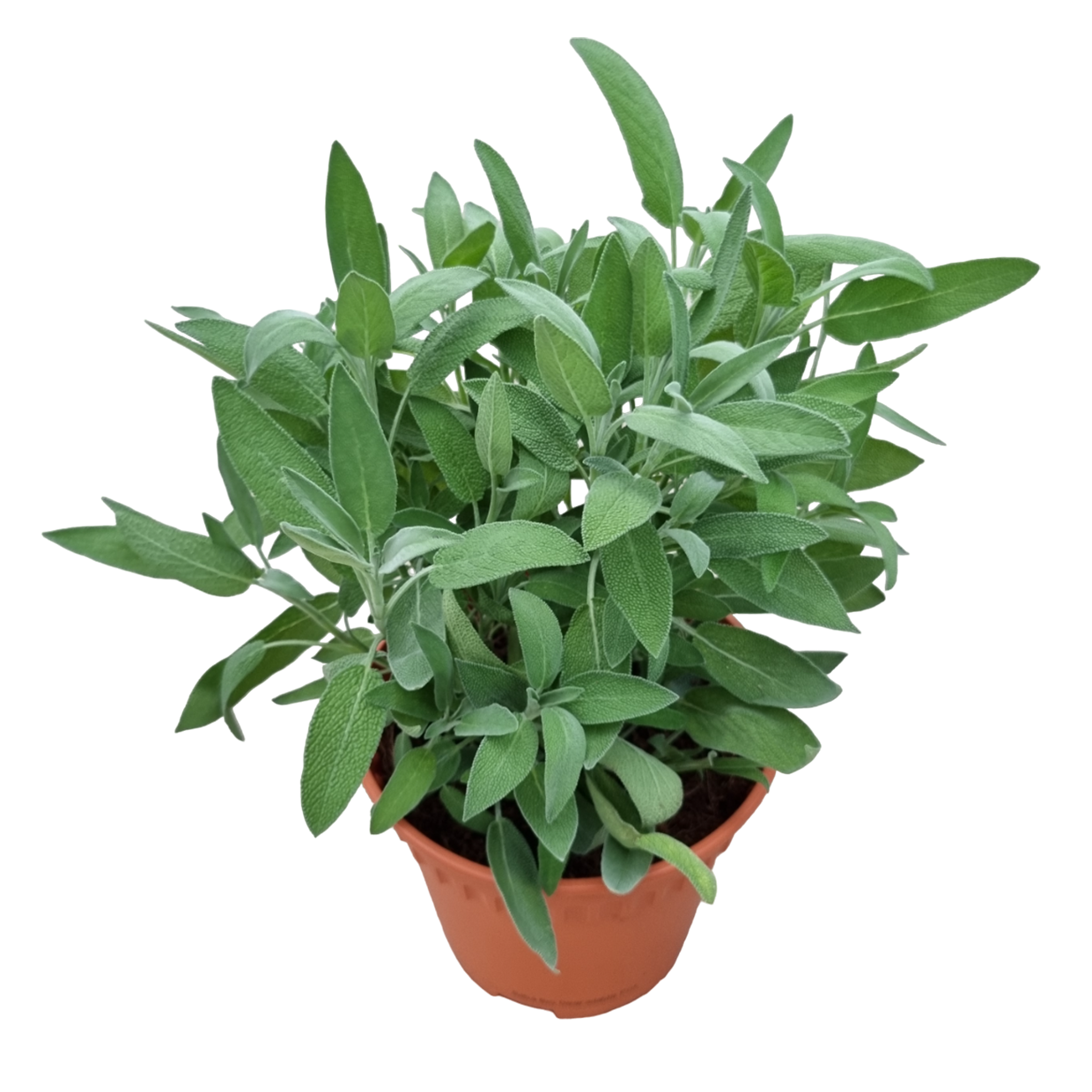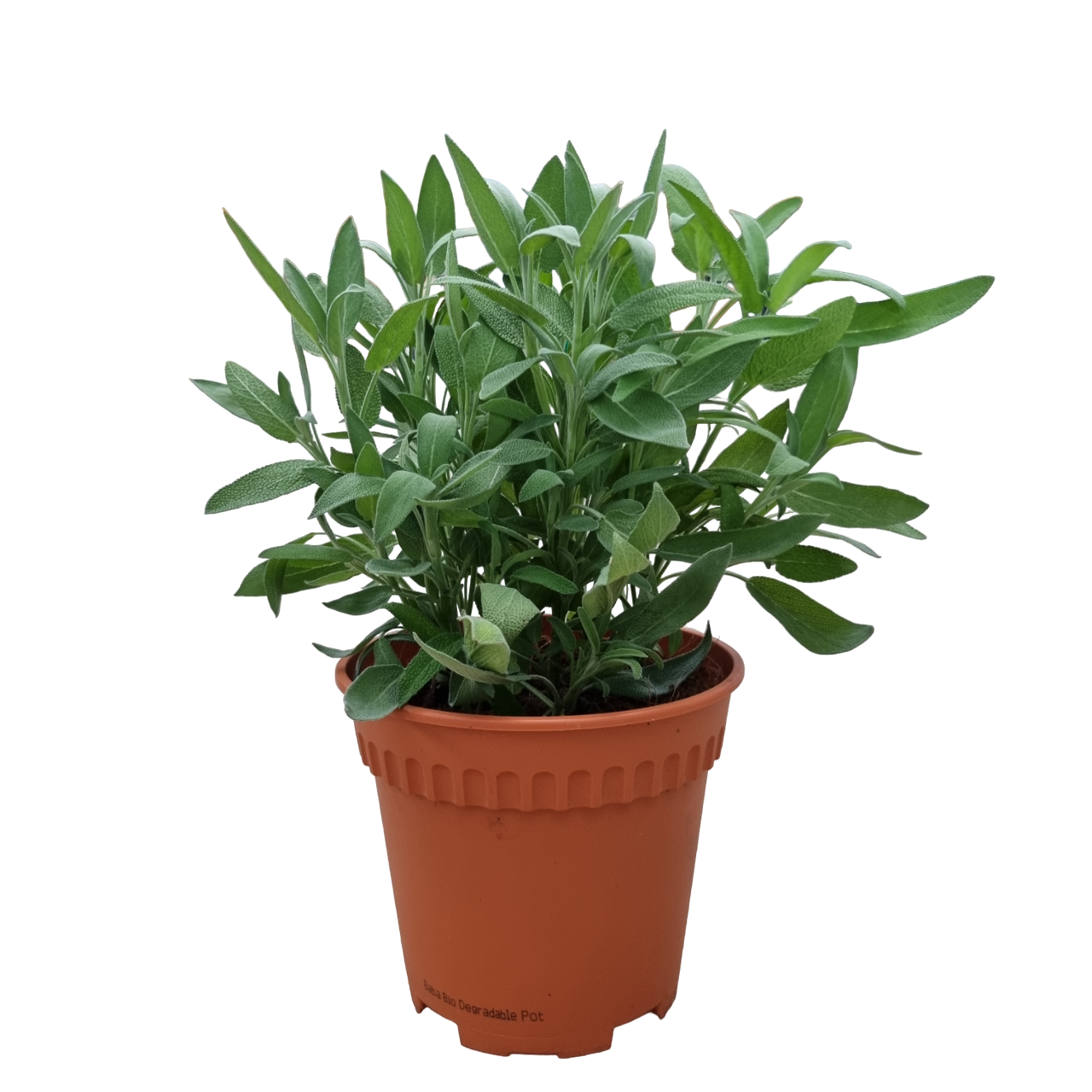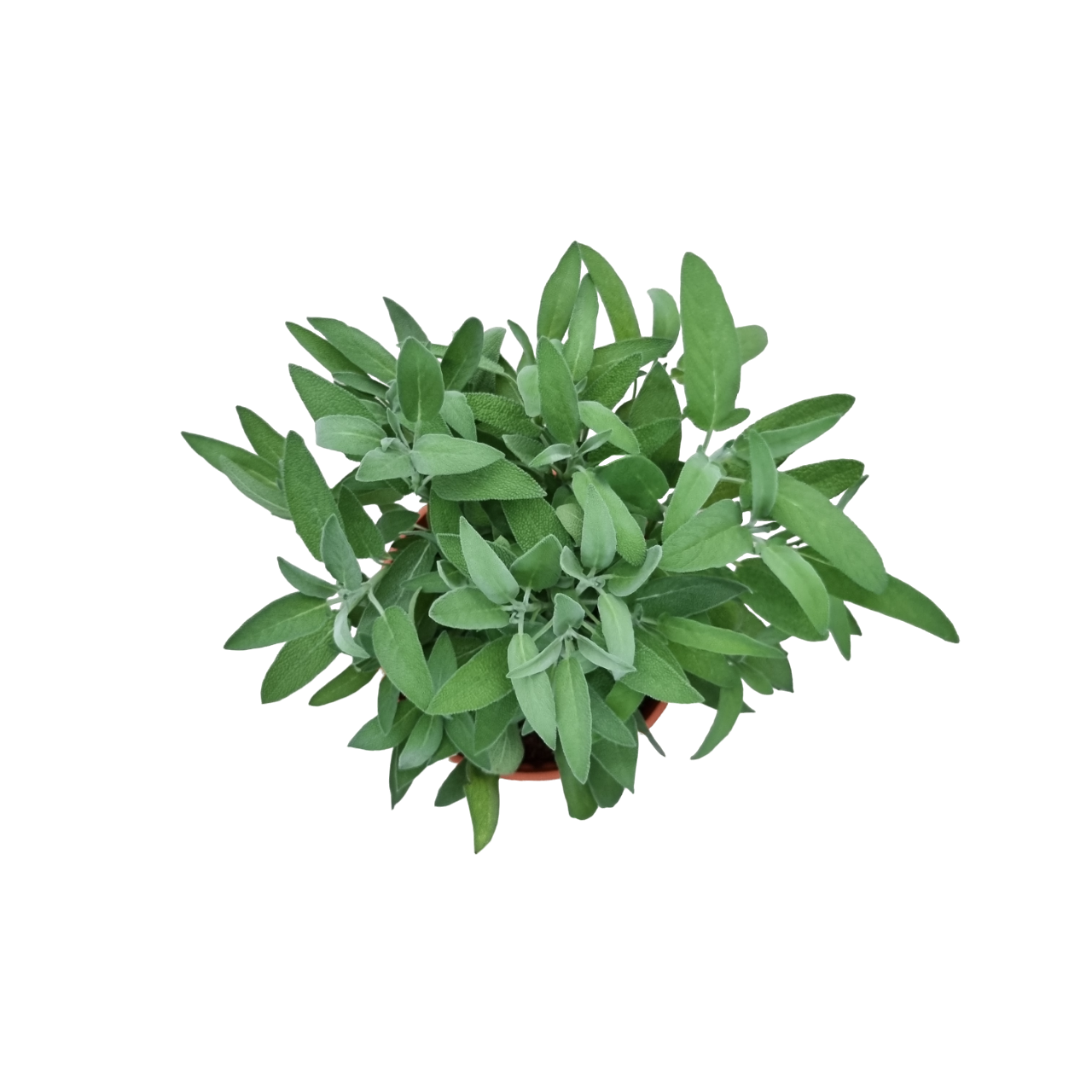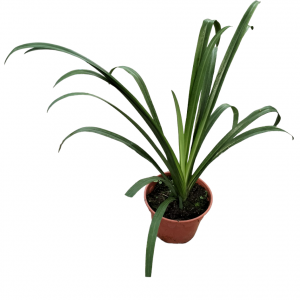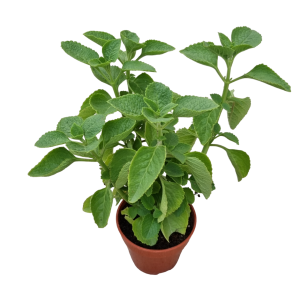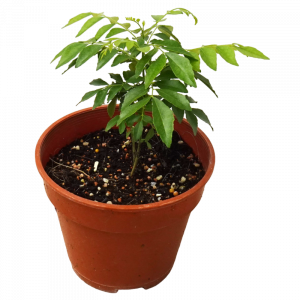Salvia officinalis, commonly known as Common Sage, is a versatile, aromatic herb that belongs to the mint family (Lamiaceae). Native to the Mediterranean region, sage is widely cultivated for its fragrant, grey-green foliage and pungent, slightly peppery flavour. It is a hardy, woody-stemmed perennial plant, recognised for its elongated leaves that are covered in fine hairs, giving them a soft, velvety texture. Sage is popular not only for its culinary uses, adding depth and flavour to a variety of dishes, but also for its ornamental qualities. With its attractive foliage and delicate, purple or blue flowers, sage makes an excellent addition to herb gardens and landscapes.
Plant Care Guide:
Light: Sage thrives in full sunlight and should be planted in a location where it can receive at least 6 hours of direct sunlight per day. Adequate sunlight helps promote robust growth and ensures that the plant’s leaves develop their full flavour and aromatic properties. If grown indoors, place the plant near a sunny window where it can get sufficient light.
Watering: Sage prefers moderately dry conditions and is drought-tolerant once established. It is essential to avoid overwatering, as sage is susceptible to root rot in overly wet soil. Water the plant deeply when the top 3-4 cm of soil feels dry, but ensure that the soil is well-draining and does not stay waterlogged. Allow the soil to dry out between waterings, as sage does not thrive in consistently moist conditions.
Soil: Sage grows best in well-draining, light, and sandy or loamy soil. It prefers soil that is not too rich or overly fertilised, as this can lead to overly lush growth with less flavourful leaves. A standard potting mix with added perlite or sand will help ensure proper drainage and prevent water from accumulating around the roots. If planting outdoors, ensure the soil has good drainage, as sage does not tolerate waterlogging.
Fertilising: Sage is a relatively low-maintenance herb that does not require frequent fertilising. You can apply a balanced, slow-release fertiliser or organic compost once or twice during the growing season to encourage healthy growth. Avoid excessive fertilising, as too many nutrients can result in overly soft, less flavourful leaves. Light feeding is typically sufficient to support the plant’s growth and flavour.
Common Pests: Sage is generally resistant to pests, but it can occasionally attract aphids, spider mites, or whiteflies, especially when grown in a humid or overly moist environment. Regularly inspect the plant for signs of pest infestations, such as curled or discoloured leaves. If necessary, treat the plant with an organic insecticidal soap or neem oil to control pests. Additionally, sage can be prone to fungal diseases like powdery mildew in damp conditions, so it is important to provide adequate air circulation around the plant.
Lighting: Full Sun
Watering: Water Thoroughly
Watering Frequency: When top layer of soil is dry
Spider mites: These pests can cause leaves to appear stippled or yellowed, and the plant may lose its leaves. Spider mites thrive in dry conditions, so increasing humidity levels and regularly misting the plant can help prevent them..
Powdery Mildew: Powdery mildew is a fungal disease that affects a wide range of plants, causing a white, powdery growth to appear on leaves, stems, and flowers. The disease is most common in warm, humid conditions and can lead to stunted growth, leaf drop, and reduced yields. It can be prevented by providing good air circulation, avoiding overhead watering, and treating infected plants with fungicides or other management strategies..
Garden Formula Potting Soil.
BIO-PLUS NPK 8-8-8-10+TE Organic Fertiliser: Every 2 Weeks.



